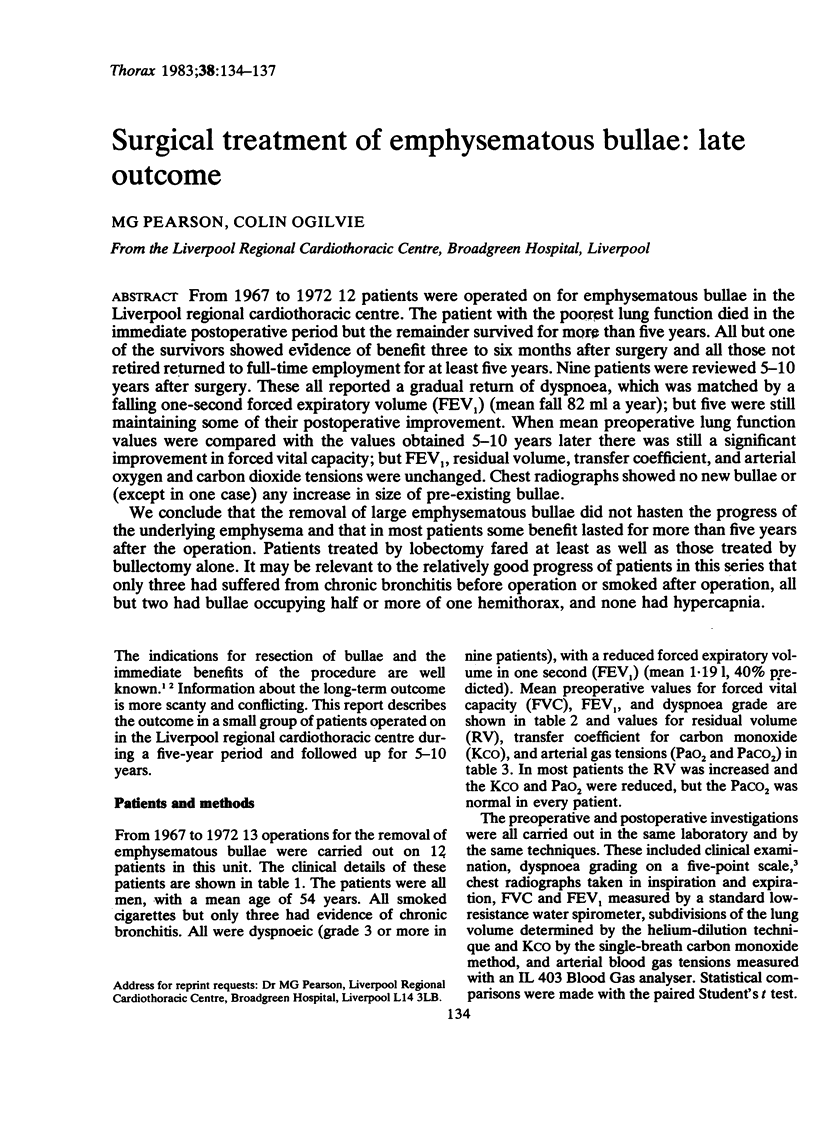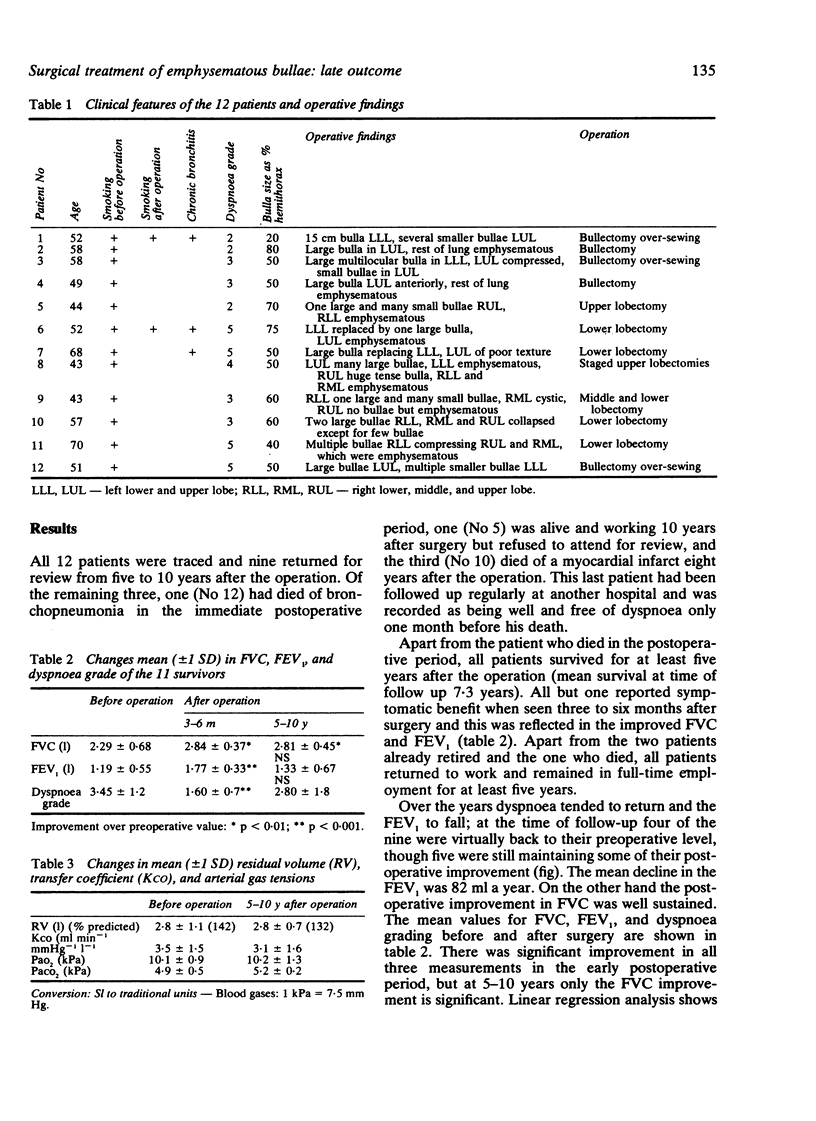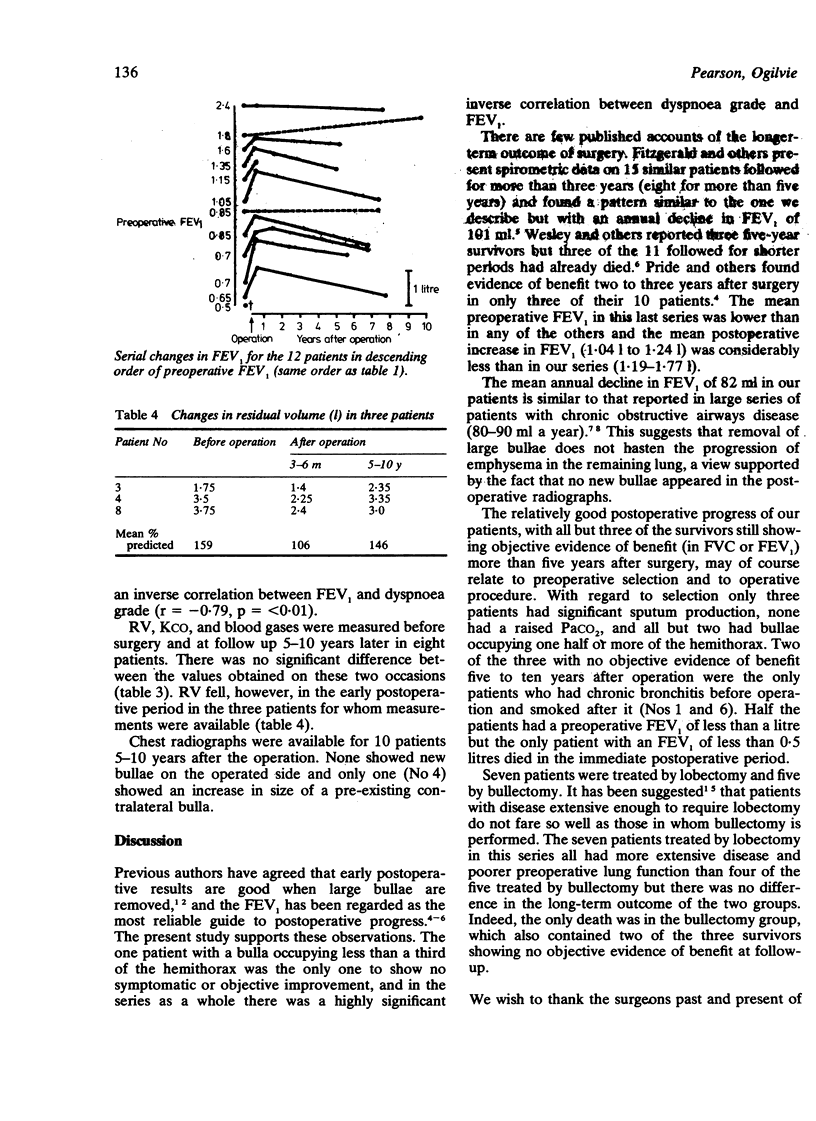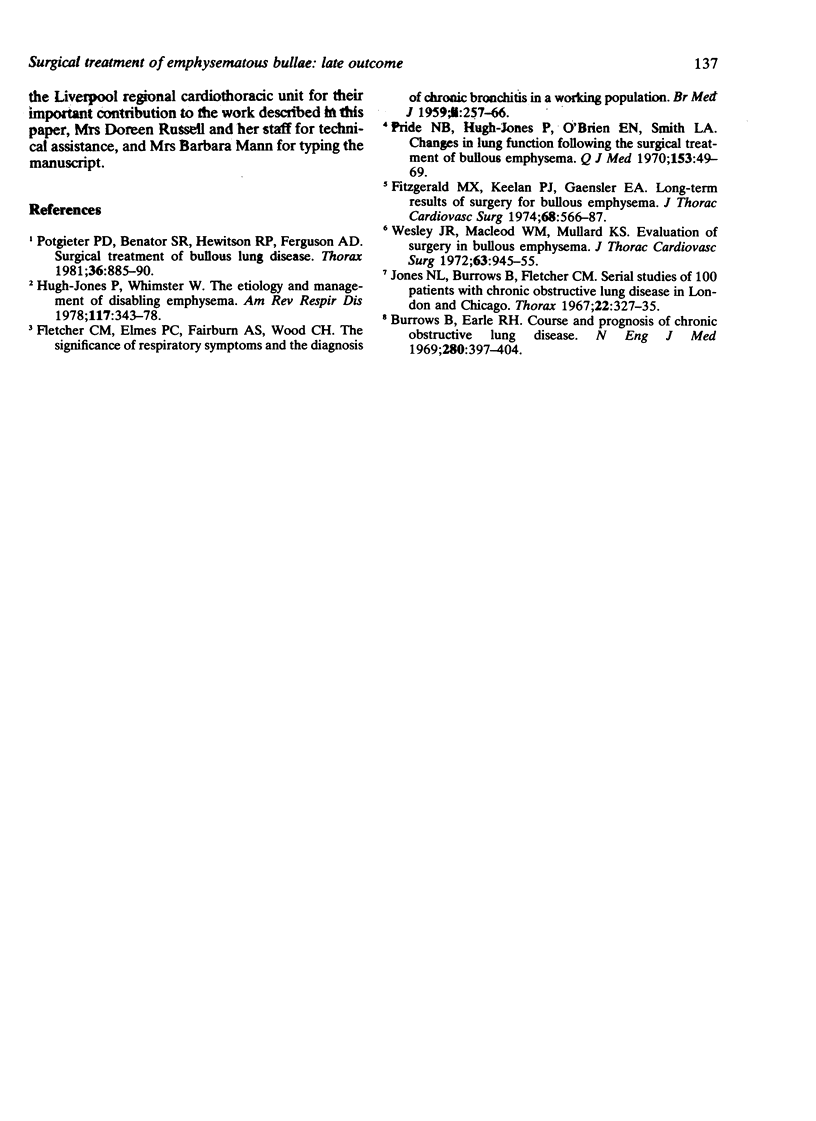Abstract
From 1967 to 1972 12 patients were operated on for emphysematous bullae in the Liverpool regional cardiothoracic centre. The patient with the poorest lung function died in the immediate postoperative period but the remainder survived for more than five years. All but one of the survivors showed evidence of benefit three to six months after surgery and all those not retired returned to full-time employment for at least five years. Nine patients were reviewed 5-10 years after surgery. These all reported a gradual return of dyspnoea, which was matched by a falling one-second forced expiratory volume (FEV1) (mean fall 82 ml a year); but five were still maintaining some of their postoperative improvement. When mean preoperative lung function values were compared with the values obtained 5-10 years later there was still a significant improvement in forced vital capacity; but FEV1, residual volume, transfer coefficient, and arterial oxygen and carbon dioxide tensions were unchanged. Chest radiographs showed no new bullae or (except in one case) any increase in size of pre-existing bullae. We conclude that the removal of large emphysematous bullae did not hasten the progress of the underlying emphysema and that in most patients some benefit lasted for more than five years after the operation. Patients treated by lobectomy fared at least as well as those treated by bullectomy alone. It may be relevant to the relatively good progress of patients in this series that only three had suffered from chronic bronchitis before operation or smoked after operation, all but two had bullae occupying half or more of one hemithorax, and none had hypercapnia.
Full text
PDF



Selected References
These references are in PubMed. This may not be the complete list of references from this article.
- Burrows B., Earle R. H. Course and prognosis of chronic obstructive lung disease. A prospective study of 200 patients. N Engl J Med. 1969 Feb 20;280(8):397–404. doi: 10.1056/NEJM196902202800801. [DOI] [PubMed] [Google Scholar]
- FLETCHER C. M., ELMES P. C., FAIRBAIRN A. S., WOOD C. H. The significance of respiratory symptoms and the diagnosis of chronic bronchitis in a working population. Br Med J. 1959 Aug 29;2(5147):257–266. doi: 10.1136/bmj.2.5147.257. [DOI] [PMC free article] [PubMed] [Google Scholar]
- FitzGerald M. X., Keelan P. J., Cugell D. W., Gaensler E. A. Long-term results of surgery for bullous emphysema. J Thorac Cardiovasc Surg. 1974 Oct;68(4):566–587. [PubMed] [Google Scholar]
- Hugh-Jones P., Whimster W. The etiology and management of disabling emphysema. Am Rev Respir Dis. 1978 Feb;117(2):343–378. doi: 10.1164/arrd.1978.117.2.343. [DOI] [PubMed] [Google Scholar]
- Jones N. L., Burrows B., Fletcher C. M. Serial studies of 100 patients with chronic airway obstruction in London and Chicago. Thorax. 1967 Jul;22(4):327–335. doi: 10.1136/thx.22.4.327. [DOI] [PMC free article] [PubMed] [Google Scholar]
- Potgieter P. D., Benatar S. R., Hewitson R. P., Ferguson A. D. Surgical treatment of bullous lung disease. Thorax. 1981 Dec;36(12):885–890. doi: 10.1136/thx.36.12.885. [DOI] [PMC free article] [PubMed] [Google Scholar]
- Pride N. B., Hugh-Jones P., O'Brien E. N., Smith L. A. Changes in lung function following the surgical treatment of bullous emphysema. Q J Med. 1970 Jan;39(153):49–69. [PubMed] [Google Scholar]
- Wesley J. R., Macleod W. M., Mullard K. S. Evaluation and surgery of bullous emphysema. J Thorac Cardiovasc Surg. 1972 Jun;63(6):945–955. [PubMed] [Google Scholar]


